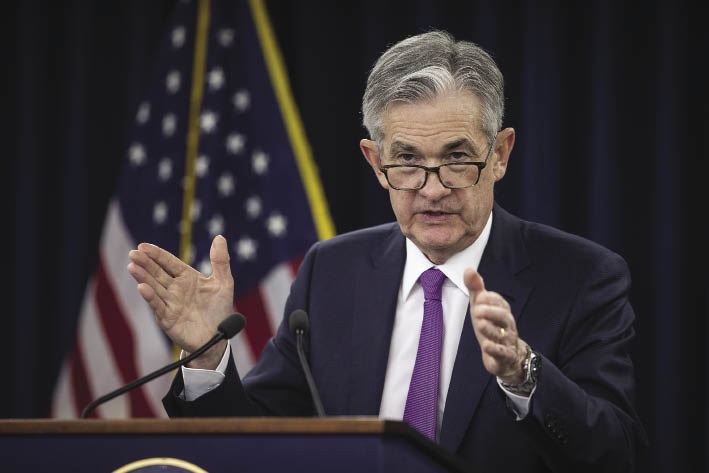
Fed Chair Jerome Powell. Photo: Getty Images
The Federal Reserve held interest rates steady on Wednesday and pushed out the start of rate cuts to perhaps as late as December, with officials projecting only a single quarter-percentage-point reduction for the year amid rising estimates for what it will take to keep inflation in check.
In a set of projections that likely removes the prospect of a reduction in borrowing costs before the November 5 US presidential election, Fed officials repositioned from expecting three quarter-percentage-point reductions in March to just the one despite an acknowledgement in the US central bank’s new policy statement of “modest further progress” towards its 2% inflation target – an upgrade from its May 1 statement.
Fed Chair Jerome Powell, speaking at a press conference following the end of the two-day policy meeting, said that combination reflected a “conservative” outlook for inflation among policymakers. Even as “more recent monthly readings have eased somewhat,” that is not yet enough to instill “greater confidence” in inflation returning sustainably toward 2%.
“It’s only one reading,” Powell said of a Labour Department report earlier on Wednesday showing the consumer price index eased last month more than expected.
“When we are (more confident), then we can look at loosening policy,” Powell said.
The shift among policymakers also coincided with an increase to 2.8% in the estimated long-run, or “neutral,” rate of interest from 2.6%, which indicates policymakers have concluded the economy needs more restraint to finish the battle against rising prices.
Recent progress has been slow, and Fed officials now project a slightly higher end-of-year inflation rate of 2.6% versus the 2.4% anticipated as of March.
The S&P 500 and Nasdaq Composite stock indices held onto gains on the day, while the US dollar and US Treasury yields remained lower. Traders of rate futures continued to price in the possibility that the Fed’s rate-cutting cycle could start in September, and a second reduction was still seen as probable by the end of the year.
“The market cares more than the economy does about whether there are two cuts this year or only one,” said Brian Jacobsen, chief economist at Annex Wealth Management. “The Fed is basically rearranging the rate-cut deck chairs.”
While rate cuts are now seen getting a likely later start and proceeding at a slower pace this year than investors have anticipated, the Fed’s policy rate is seen falling fast next year, with reductions of a full percentage point in both 2025 and 2026.
The Fed’s statement and new Summary of Economic Projections show a central bank wrestling over how to respond to data that many read as pointing to slower inflation – consumer prices in fact did not rise at all in May on a month-over-month basis, according to data released on Wednesday – but also to steady growth and job creation.
Higher neutral rate
The new projections show the economy is still expected to grow at a slightly above-trend 2.1% this year despite a sluggish first quarter, and the unemployment rate will remain at its current 4% through the year.
“Recent indicators suggest that economic activity has continued to expand at a solid pace. Job gains have remained strong, and the unemployment rate has remained low,” the Fed said in a statement that was approved unanimously.
Following little progress on inflation over the first months of the year, the result was a “dot plot” of projected policymaker interest rate forecasts that involved nearly an across-the-board shift higher in the rates considered needed to finish the battle against inflation.
Coupled with recent debate over the possibility that the neutral rate of interest was higher than estimated, the new dot plot suggested Fed officials have concluded higher rates are needed over a longer period of time to keep inflation in check. Summed with a previous increase in the March projection, that neutral rate is now estimated at more than a quarter of a percentage point above where it ended 2023.
The Fed aggressively raised rates in 2022 and 2023 in response to a surge in inflation that peaked at a 40-year high some two years ago.






Recent Comments